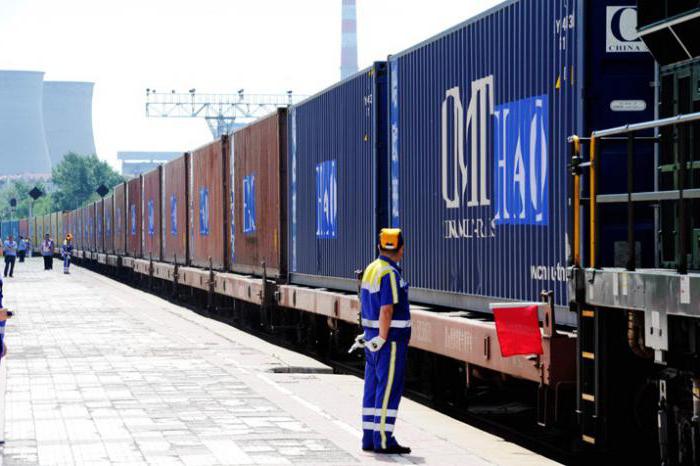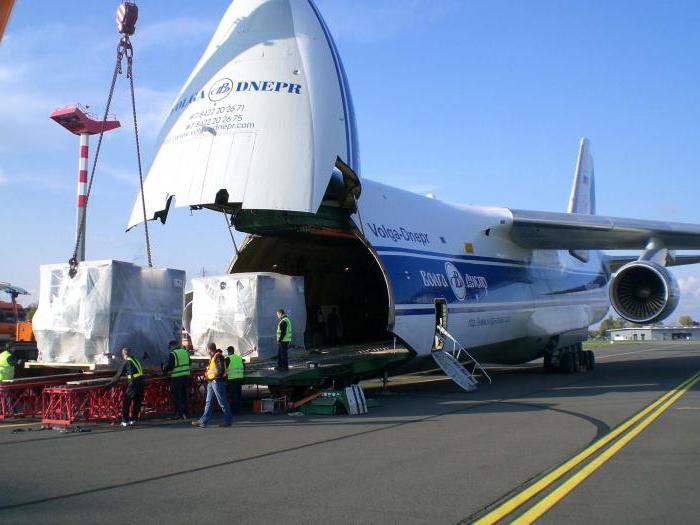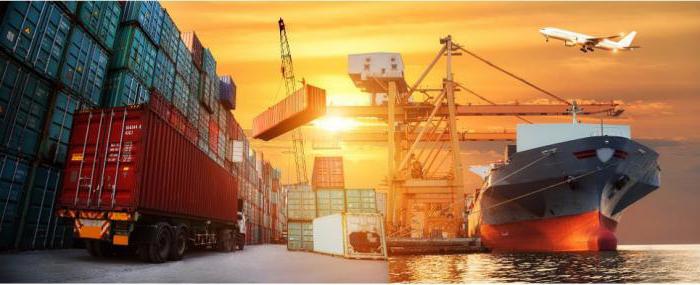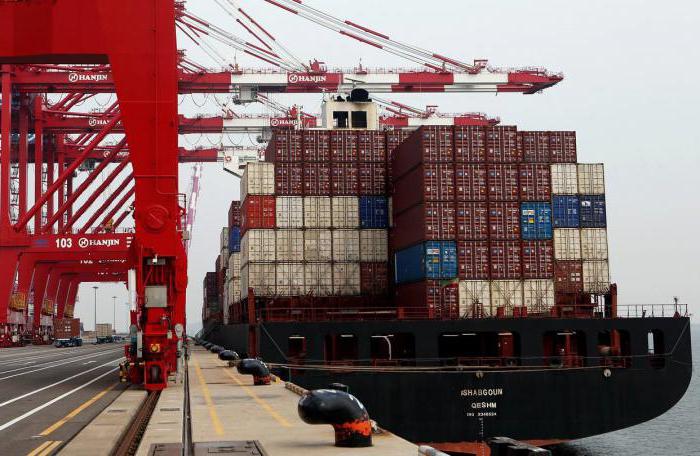Cargo transportation is an operation due to which there is a movement of goods, baggage or passengers from the point of departure or reception of goods to the destination or unloading using a certain transport suitable for a particular process. Rational classification of goods is necessary for the correct implementation of the range of services.

Regulatory freight standards
There are basic documents that regulate the transportation of goods in Russia. These include: the Charter (UAT), the Rules (PAGAT), the Convention (the international convention of the contract of carriage) and, of course, the rules of the road (SDA). There are standards that describe in detail Russian GOSTs and regulate the stages of transportation.
Quantification of regulatory standards
The rules for the carriage of goods include more than four thousand federal laws, they account for about 10 thousand different regulations and decrees, most of which were developed back in the days of the Soviet Union. Only a few of them have undergone changes. The rules for the transportation of bulk goods and other types of cargo containers must be respected by all. Next, we will open the topic of the material in more detail.
Cargo transportation rules
So, let's get to the consideration. There are certain requirements for the transportation process of the class of dangerous goods, oversized goods, etc. 23 points of the rules are divided into 5 parts:
- Axle load - there are exact numbers in the axle load, which depends on the distance between the approximate axes. In order to adhere to these standards, the car must first be measured or identified. This can be done with a technical certificate or by measurement with special certified devices. Of course, measuring with a ruler, construction tape, and so on is unacceptable.
- Cargo control is mandatory when loading operations are carried out, including placement and securing, as well as during traffic.
- It is necessary to correctly place the cargo so that there is no restriction of the view, there are no difficulties in driving the vehicle, identification marks are not closed, noise, dust and dirt are not created.

- Marking and transportation of bulky cargo that extends over the length, width or height beyond the limits specified in GOST - 2.55x13.6x2.55 meters (respectively, width, length, height). A car that carries a similar class of cargo is obliged to move along the road and adhere to the relevant rules, and if the width is more than four meters, then such a load is accompanied by a road inspection. We are talking about the identification mark “Oversized cargo”. This is evidenced by the rules of transportation of goods.
- The same sign should be affixed to the product, which stands for the dimensions of the vehicle forty centimeters on the side and one meter front and rear.
- Transportation of a class of dangerous goods and heavyweights.
In our time, scientific and technological progress has led to the fact that increasingly use hazardous materials and substances, respectively, they are transported. State control has been introduced to ensure compliance with the rules and regulations for the safe delivery of flammable, poisonous and explosive substances.
As for the heavyweights, such cargo classes become a headache for the senders and customers of such a service. There is no information about the complexity of transportation, which leads to delays, fines and additional difficulties. For the correct registration of transportation and ordering the necessary transport, it is necessary to correctly classify the goods sent.
By the way, the rules for the transport of bulk goods in a standard trailer without containers is prohibited.

The need for a charter document
The charter of automobile transport is an important document that regulates the activities of all motor transport enterprises, including citizens using these services. This act discusses important points, describes the rules of interaction between the sender, the carrier and the recipient.
Participants in the cargo transportation process
It is important to highlight the following entities for a clear understanding of the regulatory aspects of the phenomenon in question:
- Shipper - a legal entity or an individual who is indicated in such a name in the contract of carriage and in the bill of lading. The sender may not be the owner of the goods, but then he has the right to speak on behalf of the owner.
- Consignee - a person who has the right to receive the goods.
- An order is one of the types of freight contract.
- Container - equipment for multiple use (with a volume of more than 1 m3), is used to exclude the stage of cargo transshipment from one type of transport to another in the process of loading and unloading.

- Carrier - legal person, individual responsible for the transportation of passengers, goods, baggage, and for the delivery of goods to the recipient.
- Waybill - a document where the execution of work is recorded, allows you to keep records and monitor the activities of the driver.
- Perishable cargo is a type of product that requires transportation at a special temperature specified in the contract.
- Waybill (TTN) - it is used during transportation, confirms the existence of the contract.
- Freight, charterer - a person who pays for the use of a vehicle (in whole or in part). Freighter - a person who provides the charterer with a vehicle (or part of the volume) under a freight contract.
Outsourcing
It is important to note that often a freight contract is concluded together with a contract of carriage and third and fourth parties are involved in the process. That is, the carrier becomes a charterer and then uses the charterer's vehicle to transport cargo (baggage, passenger). Such a situation can confuse everyone, the end carrier becomes especially vulnerable, due to flaws in the current rules in the UAT and the BCP.

Cargo classification
Cargo may be objects and materials that are delivered from the sender to the recipient. The composition, type and size of the cargo determine the need for a particular transport. Cargoes can be divided according to certain criteria. The classification is as follows:
By physical condition: this cargo is divided into five classes of cargo: plastic, bulk, solid, gaseous, liquid.
By divisibility - there are two types: divisible and indivisible:
- indivisible, which without damage to the cargo cannot be divided, for example, pipes, bags, boxes;
- divisible is a piece of goods that is easily separated from each other.
By the presence of containers: packaged and unpacked:
- tare - they include cargo that must be placed in a container to protect it from the external environment, or vice versa, to protect the external environment from the effects of the contents of the container.
- bulk - the type of product that is transported without packaging.

In the image of loading and unloading, there are five types of cargo: bulk, portable, bulk, rolling, bulk.
By weight per package there are two classes: lightweight (up to 250 kg) and heavy (do not exceed 50 tons).
In terms of size - oversized, small, overall and oversized.
According to storage conditions, goods are divided into 5 types: they are either ordinary perishable, with a pungent odor, unsanitary, living creatures.
There are loads that are classified depending on the conditions of protection against external influences, there are 4 types of them:
- they may be ordinary;
- requiring protection from precipitation, dust;
- who require protection from temperature effects;
- those that need shock and shock protection.
By danger there are:
- low-risk, these include building materials, manufactured goods, etc.
- dusting - such as cement, lime;
- hot - here include asphalt, as well as bitumen;
- dangerous - these are substances that, during transportation, can pose a threat to human life and health.
Why is cargo stratification necessary for groups?
The cargo class determines the utility of rolling stock and determines the tariffing for the transportation of a unit of goods. During the transportation of cargo of the first class, the maximum load capacity is required, while for the 4th class - less than in half. In connection with these, tariffication is changing, and, consequently, pricing policy.

Finally
Every year, transportation organizations provide customers with an increasingly wide range of services. Moreover, the transport company guarantees the customer high-quality transportation. Initially, they develop a concept and an optimal route along which the cargo will pass. They calculate the entire cost of this delivery, prepare all the necessary documentation. After that, determine the vehicles and loading equipment that will be needed for this product. The next step is to issue the necessary permits, then carefully monitor the movement of goods, from the beginning of the journey to the time of delivery and unloading of goods to the final recipient.